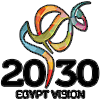Abstract: Background: 1,2,4-triazoles possess a broad spectrum of biological activities such as analgesic,
antimicrobial, antitubercular, anti-inflammatory and antineoplastic activities. This heterocycle and their derivatives
were included into a wide variety of therapeutically interesting drugs. Hence, it is of great interest to explore
new 1,2,4-triazoles as cytotoxic agents targeting EGFR, B-Raf kinases.
Methods: The final compounds 9a-b, 10a-b, 11a-b, 12a-b, 13a-b and 14a-f were prepared by refluxing a mixture
of triazole 3a-b and 7a-d with the corresponding benzaldehyde derivatives 8a-d in absolute ethanol to afford
the target final compounds in good yields. The newly synthesized triazole-containing compounds were
assessed according to standard protocols for their in vitro antiproliferative activity against four human cancer
cell lines including human pancreas cancer cell line (Panc-1), pancreatic carcinoma cells (PaCa-2), colon cancer
cells (HT-29) and lung cancer cells (H-460) using the propidium iodide (PI) fluorescence assay. Compounds 9a
and 13a were evaluated against EGFR, B-Raf and Tubulin anticancer targets.
Results: Compounds 9a, 9b, 10a, 11a, 12a, 13a and 13b showed remarkable antiproliferative activity against
the tested cell lines with IC50 range of 1.3-5.9μM. Compounds 9a and 13a with the least IC50 values in the anticancer
screening assay were tested against three known anticancer targets including EGFR, B-Raf kinase and
Tubulin. The results revealed that compound 13a showed the highest potency against B-Raf and EGFR kinases
with IC50 = 0.7 and 1.9 μM, respectively.
Conclusion: 1,2,4-triazoles reported herein are potent EGFR, B-Raf inhibitors. These lead compounds will be
subjected to more detailed mechanistic studies.
Research Department
Research Journal
Anticancer agents in medicinal chemistry
Research Publisher
Weily
Research Rank
Medicinal chemistry, Q2
Research Vol
19
Research Year
2019
Research Member
Research Abstract



